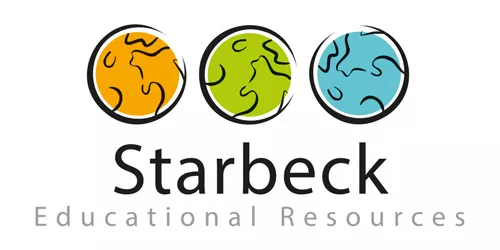Introduction to Greek Pottery for Kids
Imagine living thousands of years ago in ancient Greece, where people used clay pots, cups, and bowls not just for eating and drinking, but also to tell amazing stories! The ancient Greeks painted scenes from their daily lives and exciting myths on pottery. These pieces weren’t just useful—they were like picture books that helped tell stories about gods, heroes, and how people lived. By studying these pots today, we can learn what life was like in ancient Greece, and uncover stories that have been hidden for centuries!
Teachers, this guide introduces children to the world of Greek pottery, helping young learners connect with ancient Greece through creative artwork, mythology, and stories. Let’s explore how each type of Greek pottery tells a unique story from the past!
Why Was Pottery So Important in Ancient Greece?
Using Pottery as Art and Storytelling
For the Greeks, pottery wasn’t just for holding things like water, oil, or wine; it was also a way to show off their amazing art skills and tell stories. Artists used pottery as a “canvas” to paint everything from big, exciting myths to everyday scenes like shopping in the market or family dinners.
Imagine decorating your own water bottle with scenes from your favorite book or a special event in your life! That’s what Greek artists did. They used pottery to capture moments that mattered to them, which means every pot or vase they made can help us learn about what they loved and believed in.
Pottery in Special Ceremonies
Greek pottery was also used in religious ceremonies and big events. For example, some pots held special oils or perfumes used in religious ceremonies, while others were given as prizes in sports competitions! That means the pottery didn’t just look cool—it also helped people celebrate special occasions and show respect for the gods they believed in, like Zeus, the king of the gods, and Athena, the goddess of wisdom.
Different Styles of Greek Pottery: How Did They Make It?
The Geometric and Archaic Styles
The first pottery styles, called Geometric and Archaic, were simple but unique. The Geometric style (named after shapes like circles and triangles) came first. During this time, Greek artists decorated pots with rows of shapes, creating a pattern that looked organised and neat.
Later on, in the Archaic period, artists became even more creative, adding animals and even people to their pottery designs! This change made it possible to tell stories on pottery, showing things like battles, dances, and feasts. These early styles taught artists how to use pottery as a “story canvas.”
Black-Figure and Red-Figure Pottery: Painting Techniques
As artists got even more skilled, they began using a black paint called slip to create detailed scenes on the pots. This style was called black-figure pottery because the people, animals, and objects looked like black silhouettes. Artists painted the figures in black and then used a tool to scratch out fine details, like clothing and faces.
Later, they developed the red-figure technique, which did the opposite! The background was painted black, and the figures stayed red. This way, artists could draw even more details, making the characters’ faces and clothes look super realistic. It was like watching a scene from a movie come to life on a pot!
Types of Greek Pottery and What They Were Used For
Amphora: The Ancient Jar for Everything
The amphora was a large jar that people used to store food and liquids, like olive oil, wine, and water. It had two big handles, making it easy to carry. Artists painted amphorae with scenes from Greek myths and daily life, so each one is like a mini history book in clay!
In ancient Greece, people would have amphorae in their homes, just like we have jars and containers in our kitchens today. Some amphorae were also given as prizes to athletes who won sports competitions, making them very special!
Kraters: Mixing Wine for Celebrations
The krater was another type of pot used to mix water and wine for big parties. The Greeks believed that wine was a gift from Dionysus, the god of celebration and fun, so the kraters were often decorated with happy scenes of people dancing, playing music, or enjoying a feast. Kraters were important for events where people gathered to talk, laugh, and celebrate together.
Kylix: The Cup with a Surprise Inside
The kylix was a wide, shallow drinking cup with handles on both sides, making it easy to hold. But what made the kylix extra fun was its hidden artwork! When you finished drinking, you’d see a painted scene at the bottom. Sometimes, these scenes were funny, and sometimes they showed characters from Greek mythology. It was like a surprise waiting for you at the end of your drink!
Mythology on Greek Pottery: Gods, Goddesses, and Heroes
The Amazing Greek Gods and Goddesses
Greek mythology is filled with amazing gods and goddesses, and Greek artists loved to paint them on pottery. Each god had a special look so people could tell who they were. For example, Zeus, the king of the gods, is often shown holding a lightning bolt, while Athena, the goddess of wisdom, is usually with an owl. These paintings weren’t just pretty—they helped people remember the stories and lessons about these powerful gods.
Each pot with a god or goddess was like a mini storybook, teaching people about the different personalities and adventures of the gods. It was a fun way to learn the tales that explained how the world worked and why certain things happened, according to Greek beliefs.
Heroes Like Heracles and Odysseus
Heroes in Greek mythology, like Heracles (also called Hercules) and Odysseus, were a big deal. Heracles was famous for his incredible strength and bravery, and many pots show him fighting scary monsters as part of his “Twelve Labors.” Odysseus was known for his smarts and cleverness, and his journey home after the Trojan War was full of dangerous adventures. These heroes showed the Greeks what it meant to be brave and wise, so artists painted their stories on pottery to inspire others.




Daily Life Scenes on Greek Pottery: A Peek into the Past
Scenes from Everyday Life
Not all Greek pottery was about heroes and gods. Some showed scenes from everyday life, like people working, shopping, or even children playing. These pictures are super helpful for us today because they show what normal life was like for ancient Greeks. We can see what they wore, the tools they used, and the games they played.
For example, some pots show athletes training for races, while others show people cooking or weaving. It’s like a snapshot of history, showing us the little details that bring ancient Greece to life!
Fun and Games: Greek Parties and Gatherings
The Greeks loved to throw parties, and they even had a special word for them—symposion. At these parties, people would eat, drink, play music, and talk about big ideas like friendship and bravery. Pottery often shows people enjoying these gatherings, playing musical instruments, or talking together. It’s easy to imagine kids in ancient Greece looking at these pictures and dreaming about going to a fun party like that someday!
Symbols and Animals: Hidden Meanings on Greek Pottery
Understanding Symbols on Pottery
Ancient Greek artists liked to add little symbols, or hidden meanings, to their pottery. For example, the owl is often seen next to Athena, the goddess of wisdom, because owls are symbols of wisdom. The lyre, a musical instrument, is often shown with Apollo, the god of music, and represents creativity and harmony.
These symbols made the pottery even more interesting because they told stories through pictures that people back then would understand right away. Learning to spot these symbols is like learning a secret code from ancient Greece!
Animals on Greek Pottery
Animals were also popular on Greek pottery and often represented specific qualities. Lions, for instance, symbolised strength and courage, while dolphins and horses were symbols of the sea and adventure. Seeing these animals on pottery gave people reminders of bravery, exploration, and the natural world around them.
Greek Pottery’s Influence on Art Today
Inspiring Artists All Around the World
The art style used in Greek pottery has inspired artists for hundreds of years! The balance, detail, and storytelling of Greek pottery can still be seen in modern art, especially in paintings and sculptures. If you visit a museum, you might find artists still using similar shapes, patterns, and stories in their work today.
Keeping History Alive Through Pottery
Today, museums all around the world display Greek pottery as part of history, helping people learn about ancient Greece in a fun and interesting way. Kids, families, and teachers can see these pots up close, learn about their stories, and even try making pottery themselves. Seeing these pieces in person helps us imagine what life was like in ancient Greece and understand the history that’s part of our own story today.
Conclusion: What We Can Learn from Greek Pottery
Greek pottery might seem like just old clay pots, but they’re actually windows into a world full of stories, heroes, and gods! Each piece tells us about how the ancient Greeks lived, celebrated, and imagined the world around them. By studying Greek pottery, we can discover how people from thousands of years ago thought about life, friendship, bravery, and the importance of art.
So next time you see a piece of Greek pottery, try to imagine the story it might be telling. Was it used at a feast with friends? Did it carry a special oil for a religious ceremony? Or maybe it showed a famous hero’s adventure? Greek pottery gives us clues to a fascinating time and teaches us that art can preserve history, connecting people across centuries.
FAQs about Greek Pottery for Kids and Teachers
1. What materials did the Greeks use to make their pottery?
Ancient Greeks made pottery using clay, a soft, sticky earth material that could be shaped and then hardened by baking it in a kiln (a special hot oven). They used a type of clay called terracotta, which turns orange or red when fired, making the pots strong and colorful.
2. Why did the Greeks paint their pottery with stories?
Painting stories on pottery allowed the Greeks to share their beliefs, values, and important events with others. It was like decorating their bowls and cups with pictures from their favorite tales. These designs helped people learn about myths, heroes, and gods while using everyday items!
3. What were some common shapes of Greek pottery?
Greek pottery came in many shapes, each with a purpose. The amphora was for storing food and liquids, the krater was for mixing wine at parties, and the kylix was a wide cup used for drinking. Each shape was designed with a special use in mind, making Greek pottery both useful and beautiful.
4. How did the ancient Greeks create black and red designs on pottery?
Greek artists used special painting techniques called black-figure and red-figure. They painted scenes with a black clay paste and used heat to turn the figures black or leave them red. This way, they could add details and make the characters on the pottery look lifelike!
5. Can I try making Greek pottery at home or in school?
Yes! While you might not have a kiln, you can use clay or even air-dry clay to create simple pots. Try decorating them with scenes from a story you like, or make up your own myth! This hands-on activity helps you connect with ancient Greek culture and have fun creating art that tells a story.














